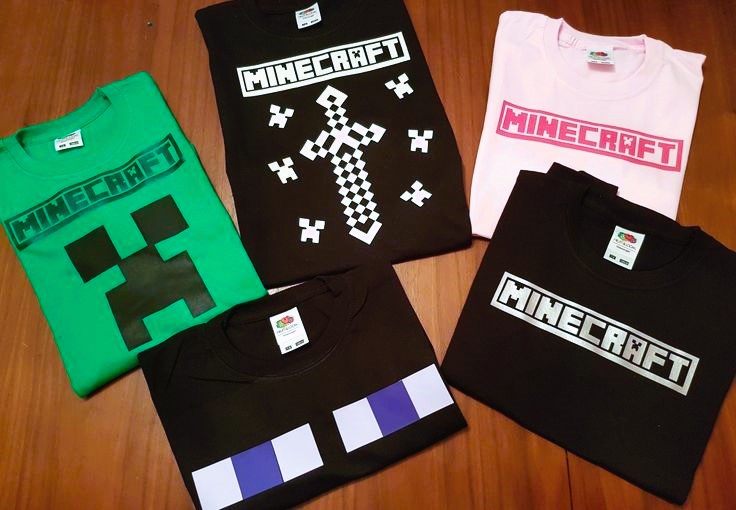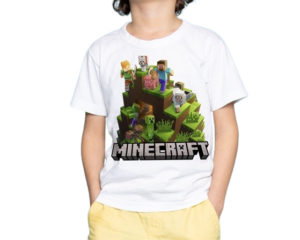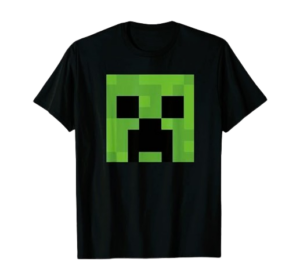In the realm of design, one blocky figure has emerged as a powerhouse, transcending the pixelated landscapes of virtual worlds and infiltrating our everyday lives. Minecraft, the iconic sandbox game that allows players to build and explore limitless creations, has not only captivated the gaming community but has also become a cultural phenomenon, influencing design across various industries. This article delves into the intriguing question of why Minecraft has become immensely popular in the world of design, from fashion to home decor, and how it has shaped our perception of creativity.
The Genesis of Minecraft:
Minecraft, created by Markus “Notch” Persson and officially released in 2011, introduced a groundbreaking concept — a virtual world composed of blocks that players could manipulate and shape to create their own environments. Its open-world, sandbox nature appealed to a broad audience, fostering creativity and exploration. What began as an indie game quickly evolved into a global sensation, with millions of players across different platforms.
Pixelated Aesthetics:

The visual aesthetics of Minecraft are unmistakable — a pixelated, retro-inspired style that harks back to the early days of gaming. The simple yet charming blocky graphics form the foundation of Minecraft’s identity. This pixelated aesthetic, reminiscent of classic 8-bit and 16-bit games, has a nostalgic appeal that resonates with players of all ages, creating a sense of familiarity and warmth.
Minecraft’s Influence on Fashion:
One of the most intriguing phenomena is the integration of Minecraft’s aesthetic into the world of fashion. Graphic tees, hoodies, and accessories adorned with pixelated landscapes, iconic mobs, and blocky designs have become staples in the wardrobes of gaming enthusiasts. But why has Minecraft’s aesthetic found such a strong foothold in fashion? Choosing the right prints for your brand, see the link for more details.
- Nostalgia and Retro Appeal:
- The pixelated aesthetics of Minecraft evoke a sense of nostalgia, tapping into the memories of gamers who grew up playing classic video games. This retro appeal extends beyond the gaming community, attracting individuals who appreciate the simplicity and charm of early video game graphics.
- Universal Recognition:
- The iconic elements of Minecraft, such as Creeper faces, diamond pickaxes, and the pixelated Steve character, enjoy widespread recognition. These symbols have become cultural touchstones, transcending the gaming community and making their way into mainstream fashion.
- Expressing Creativity and Individuality:
- Minecraft’s emphasis on creativity and individual expression has seamlessly translated into fashion choices. Wearing Minecraft-themed clothing allows fans to showcase their love for the game while expressing their unique style. It’s a form of wearable self-expression that goes beyond traditional gaming merchandise.
Minecraft in Home Decor:
The influence of Minecraft extends far beyond the wardrobe, making its mark in the realm of home decor. From bedding to furniture, the blocky aesthetic has found a place in our living spaces.
- Bedding and Room Decor:
- Bedding sets featuring pixelated designs, Minecraft-themed wall decals, and even furniture inspired by the game’s blocky structures have become popular choices for fans looking to infuse their living spaces with a touch of Minecraft magic.
- DIY and Crafting Culture:
- Minecraft’s emphasis on crafting and building has fueled a broader DIY and crafting culture. Fans are not only purchasing Minecraft-themed decor but are also inspired to create their own pixel art, wall hangings, and even furniture pieces, bringing the game’s creativity into their homes in a tangible way.
The Cultural Impact Beyond Gaming:

Minecraft’s influence extends far beyond the gaming industry, permeating various aspects of popular culture. Its blocky aesthetic has inspired artists, musicians, and even architects. The simplicity and versatility of Minecraft’s design language have made it a canvas for creative expression across diverse disciplines.
- Minecraft in Art and Animation:
- Artists and animators have embraced Minecraft’s aesthetic in their work, creating pixel art and animations that pay homage to the game. This crossover between digital art and gaming culture has fostered a unique and vibrant creative space.
- Music and Minecraft Parodies:
- Minecraft has spawned a genre of music parodies, with fans creating songs and music videos inspired by the game. These parodies often feature lyrics that humorously reference in-game mechanics and experiences, creating a cultural bridge between the gaming community and music enthusiasts.
Where to Learn More:
For those interested in delving deeper into the world of Minecraft and its impact on design and culture, resources like Wikipedia provide a wealth of information. These platforms offer insights into Minecraft’s history, community, and its influence on various aspects of popular culture.
Minecraft’s journey from a pixelated sandbox game to a cultural phenomenon has been nothing short of remarkable. Its blocky aesthetic has transcended the virtual realms, leaving an indelible mark on fashion, home decor, and popular culture at large. The enduring appeal of Minecraft’s design lies in its ability to evoke nostalgia, foster creativity, and serve as a universal language that resonates across diverse communities. As we continue to navigate the pixelated landscapes of Minecraft, its influence on design remains a testament to the enduring power of creative expression in the world of gaming and beyond.




